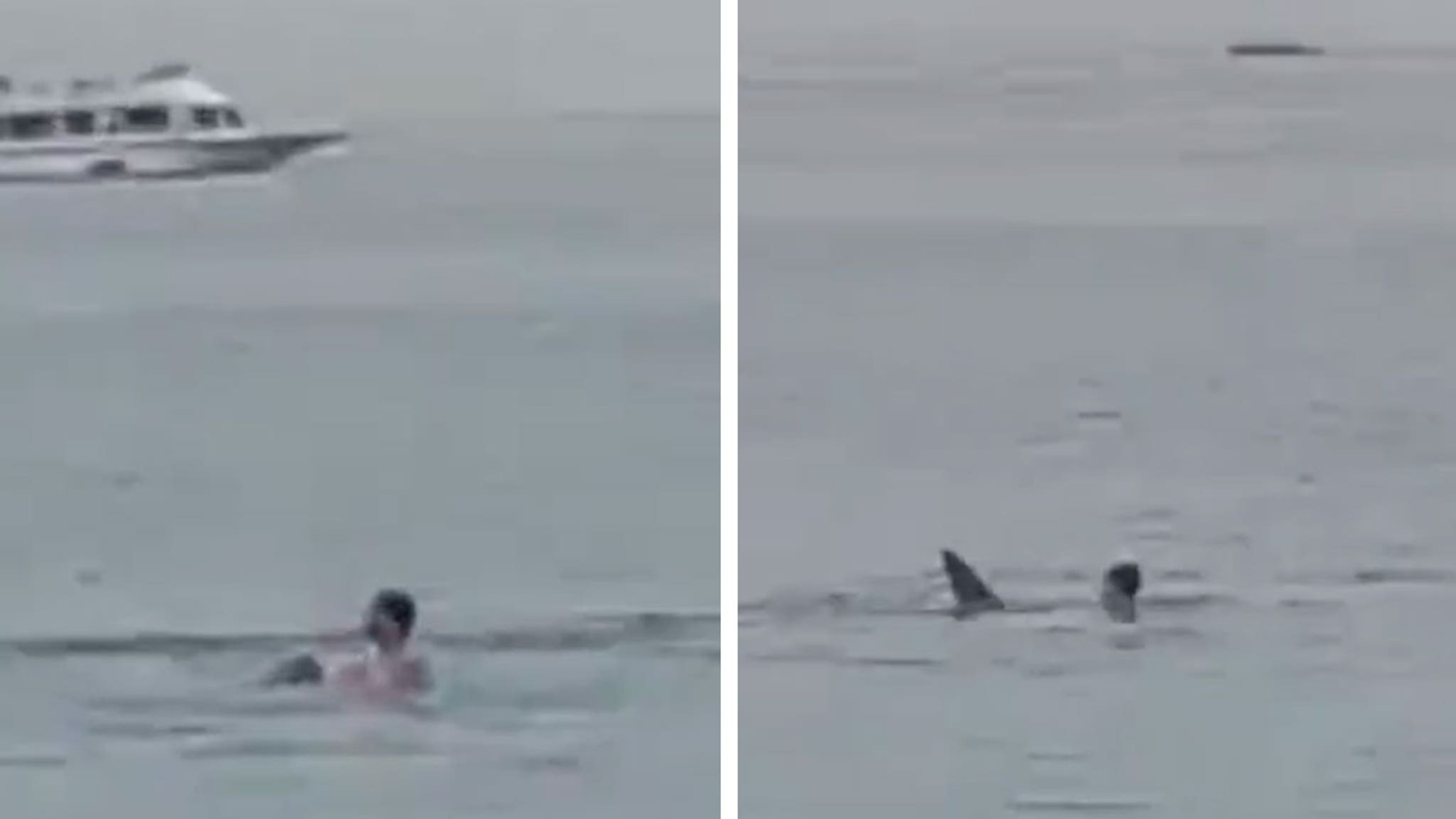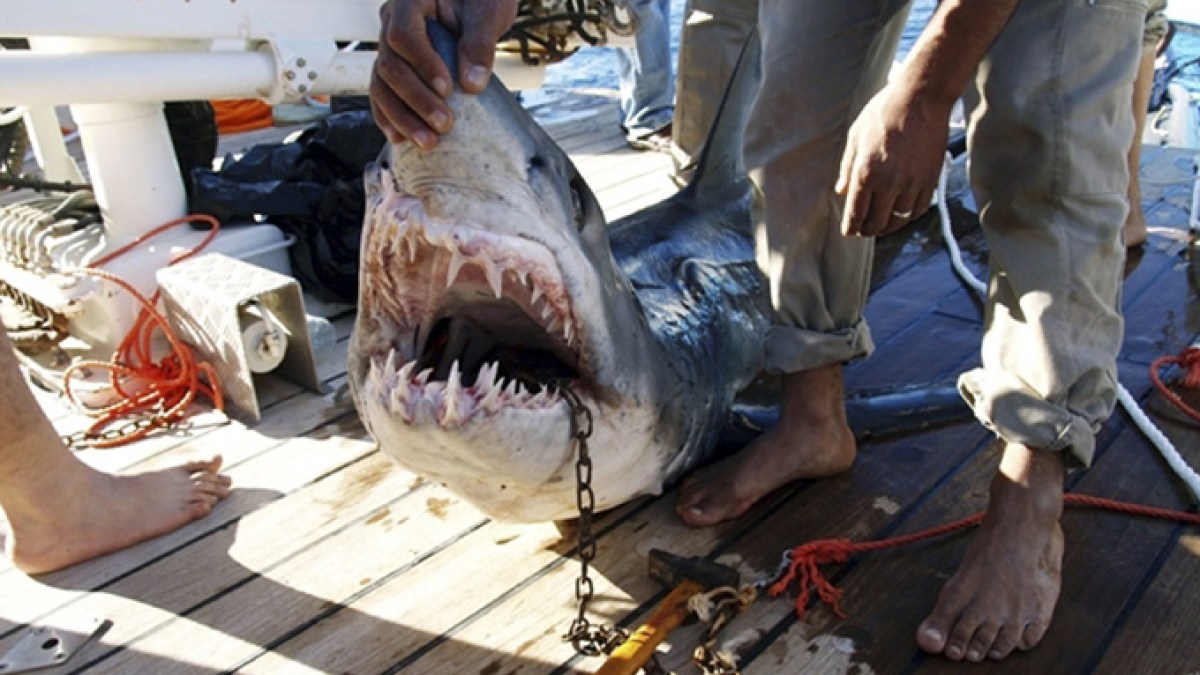Imagine this: you’re swimming in the crystal clear waters of the Red Sea, the sun warming your skin, the vibrant coral reefs teeming with life. Suddenly, a shadow falls over you, a sharp pain slices through your leg, and the water turns crimson. This is the chilling reality that unfolded for a man vacationing in Egypt, a victim of a shark attack that left the world wondering – what happened?

Image: www.tmz.com
The incident, which occurred in the popular diving spot of Hurghada, sent shockwaves through the tourism industry and raised concerns about the safety of Egyptian waters. It sparked a flurry of questions and investigations, prompting authorities to scramble for answers and tourists to reconsider their holiday plans. This article will delve into the details of the Egyptian shark attack, explore the factors that may have contributed to it, and discuss how the incident highlights the delicate balance between human activity and the marine environment.
The Incident: A Shocking Encounter
On June 9th, 2023, a 23-year-old Austrian tourist named was enjoying a snorkeling excursion in the waters off Hurghada when he was attacked by a shark. The incident occurred in a shallow, sandy area, far from the expected habitat of large predatory sharks. Shocked and injured, he managed to reach the shore where he received immediate medical attention. Thankfully, he survived the attack, though he sustained severe injuries to his leg.
The attack immediately triggered emergency measures. Egyptian authorities closed off a significant stretch of coastline to prevent further incidents. The search for the responsible shark commenced, but it remained elusive. While the incident was undeniably terrifying, it was also unusual. Shark attacks, particularly those resulting in severe injuries, are rare in the Red Sea. This made the incident a matter of global concern, prompting experts and authorities to investigate the potential causes.
Investigating the Unthinkable: Deciphering the Attack
Following the incident, a multi-pronged investigation was launched to determine the species of shark involved, the reasons behind the attack, and whether any factors contributed to its occurrence. It was a painstaking process. Divers and marine biologists deployed underwater cameras and acoustic devices to survey the area, trying to identify the suspect. Samples of the injured man’s wounds were analyzed to determine the type of teeth and shark involved.
Preliminary investigations pointed towards a mako shark as the likely culprit. Makos are known as fast-swimming, powerful predators with a reputation for aggression. They frequent the open waters of the Atlantic and Pacific oceans, but have occasionally been seen in the Red Sea. However, their presence in the shallow waters where the attack occurred was considered highly unusual, fueling speculation about its possible reasons.
A Closer Look: Was it a Case of Opportunity or Aggression?
Experts debated the possible explanations for the attack, highlighting factors that could have influenced it. Some believed it was an isolated incident, a case of mistaken identity, or perhaps a shark that was feeling particularly hungry and opportunistic. Others suggested that human activity, such as overfishing or habitat disturbance, may have played a role in pushing sharks closer to the shore, increasing the likelihood of encounters.
The potential impact of environmental pressures on shark behavior couldn’t be ignored. The Red Sea, like many other marine ecosystems, faces threats from pollution, overfishing, and coastal development. These stressors can fragment habitats, disrupt food chains, and push sharks into unfamiliar areas, potentially leading to increased encounters with humans. However, it’s important to emphasize that no definitive conclusions could be made based on speculation alone.

Image: www.aljazeera.com
Beyond the Incident: A Call for Coexistence
The Egyptian shark attack served as a stark reminder of the complex interplay between humans and the marine environment. It raised questions about the balance between responsible tourism, conservation efforts, and the need to protect marine life. Shark populations are already under immense pressure globally, facing threats like overfishing, habitat loss, and the illegal shark fin trade. This incident emphasized the need to approach these issues with caution and care.
While the incident sparked concern and fear, it also presented an opportunity for education and awareness. The focus shifted to understanding the importance of shark conservation, promoting responsible interactions with these creatures, and recognizing that coexistence is possible. Solutions included implementing stricter fishing regulations for threatened shark species, promoting shark sanctuaries, and educating tourists about responsible diving practices.
Man In Egypt Attacked By Shark
Navigating the Future: Safeguarding Our Seas
The incident also highlighted the significance of research and scientific investigation to understand marine ecosystems and to predict potential risks. By investing in research and monitoring, we can better manage our marine resources and create a sustainable environment for both humans and marine animals.
The Egyptian shark attack, despite its unsettling nature, served as a powerful catalyst for change. It reminded us of the delicate balance in our oceans, the importance of responsible stewardship, and the interconnectedness of all living things. It pushed us to re-evaluate our relationship with marine life, highlighting the need for responsible tourism, conservation efforts, and a commitment to a future where humans and sharks can coexist harmoniously.
The incident ultimately presented an opportunity for us to learn, to adapt, and to create a more sustainable future for our oceans. It was a wake-up call, prompting us to recognize the responsibility we hold in safeguarding the health and well-being of our marine ecosystems.
While the search for the responsible shark continues, the incident serves as a cautionary tale. It reminds us of the power and unpredictability of nature, and the importance of respecting the balance of our ecosystems. It also encourages us to learn more, to act responsibly, and to embrace a future where humans and sharks can thrive together in a healthy, sustainable world.





